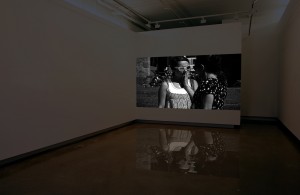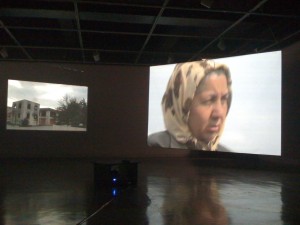Oonagh Young gallery, Dublin / Wallace Gallery, New York
September, 15 – October, 10, 2010
Esra Ersen, Katia Kameli, Maya Schweizer

Here & There is an exhibition co curated by Mary Cremin and Catherine Bernard featuring three artists Esra Ersen, Katia Kameli and Maya Schweizer whose video works explore the themes of immigration, displacement and the space between cultures. Their video works question the very notion of belonging to a specific culture.
The artists in Here and There discuss the passage from one culture to another and explore the space born from their intersection. They also question the concepts of borders, national identity and cultural heritage by reflecting upon the notions of displacement, exile and its implications. The immediacy of the medium, the documentary component and the integration of time and movement, all characteristics of video, generate a particularly pertinent frame to articulate these themes.
As migration became a central dynamic in the history of post WWII societies, immigrants were the agents of profound social changes and pioneered the creation of transnational identities. They also faced rejection, suspicion and invisibility, as they became parts of the workforce and of the cultural landscape of their host societies. Since then, economic globalization, the expansion of transnational corporations, the broader and faster communication systems, and more recently climatic changes and political crisis are fostering even larger movements of populations, from South to North and East to West. The consequences: resistance, hybridization, clashes or integration process are all part of a transformative dynamic that helps reshape and redefine our socio-cultural space while bringing into it a pluricultural dimension.

Esra Ersen, Katia Kameli, Maya Schweizer interpret and contextualize these issues in light of their distinct experience and diverse backgrounds and speak up about their implications and relevance for contemporary societies.